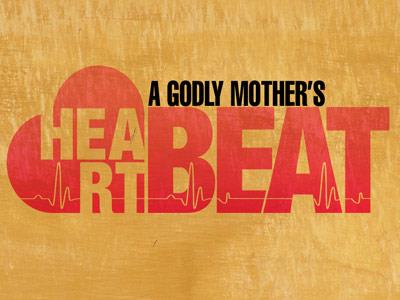-
The Forgotten Family Tree Series
Contributed by Brian Bill on Dec 14, 2004 (message contributor)
Summary: This morning we’re going to look at a list in Matthew 1 that contains over 40 names, some who were “darlings” and many others who were “disasters.”
The manager of a large office noticed a new employee and asked, “What’s your name?” The worker replied, “John.” The manager scowled and said, “Look, I don’t know where you worked before, but I don’t call anyone by their first name. It breeds familiarity and that leads to a breakdown in authority. I refer to my employees by their last name only…Smith, Jones, Baker…you got it? I’m to be referred to as Mr. Robertson. Now that we’ve got that straightened out, what’s your last name?” The new guy sighed, “Darling. My name is John Darling.” To which the boss replied, “It’s nice to meet you, John.”
We’re beginning a series today called, “Names of the Nativity.” This morning we’re going to look at a list in Matthew 1 that contains over 40 names, some who were “darlings” and many others who were “disasters”; next week we’ll focus on a nameless man from Luke 2 who had no room; two weeks from today we’ll journey to Isaiah 9 to study the numerous names given to the Messiah; and then we’ll conclude in Philippians 2 on Christmas Eve by celebrating the name that is above every name.
While some people, like the Krank’s want to skip Christmas, many of us are tempted to skip at least part of the Christmas story each year. When we come to the very first book of the New Testament, Matthew begins with a long list of hard-to-pronounce names. You would think he would begin the exciting news of Immanuel’s birth with more of a bang. It’s like the man who was asked to write a review of the phone book. This was his summary: “Great cast of characters. Weak plot.” That’s a bit how Matthew 1 sounds to many of us.
Why would he begin the most important story in the history of the world like this? This is probably the least read section of the New Testament because it seems devotionally dry and maybe even boring. How many of you have skipped over this list before or just skimmed right past it? You’re not alone. The names in this passage make up Jesus’ family tree. Actually, we could say that this is the very first “Christmas Tree.” Please turn to the beginning of the Book of Matthew so you can follow along and see how badly I mess up these names.
“A record of the genealogy of Jesus Christ the son of David, the son of Abraham: Abraham was the father of Isaac, Isaac the father of Jacob, Jacob the father of Judah and his brothers, Judah the father of Perez and Zerah, whose mother was Tamar, Perez the father of Hezron, Hezron the father of Ram, Ram the father of Amminadab, Amminadab the father of Nahshon, Nahshon the father of Salmon, Salmon the father of Boaz, whose mother was Rahab, Boaz the father of Obed, whose mother was Ruth, Obed the father of Jesse, and Jesse the father of King David. David was the father of Solomon, whose mother had been Uriah’s wife, Solomon the father of Rehoboam, Rehoboam the father of Abijah, Abijah the father of Asa, Asa the father of Jehoshaphat, Jehoshaphat the father of Jehoram, Jehoram the father of Uzziah, Uzziah the father of Jotham, Jotham the father of Ahaz, Ahaz the father of Hezekiah, Hezekiah the father of Manasseh, Manasseh the father of Amon, Amon the father of Josiah, and Josiah the father of Jeconiah and his brothers at the time of the exile to Babylon. After the exile to Babylon: Jeconiah was the father of Shealtiel, Shealtiel the father of Zerubbabel, Zerubbabel the father of Abiud, Abiud the father of Eliakim, Eliakim the father of Azor, Azor the father of Zadok, Zadok the father of Akim, Akim the father of Eliud, Eliud the father of Eleazar, Eleazar the father of Matthan, Matthan the father of Jacob, and Jacob the father of Joseph, the husband of Mary, of whom was born Jesus, who is called Christ. Thus there were fourteen generations in all from Abraham to David, fourteen from David to the exile to Babylon, and fourteen from the exile to the Christ.”
Before we jump into this section of Scripture, let’s remind ourselves that there is great benefit in studying every part of the Bible. Even though this passage is piled up with people who are long gone, it’s important to come to grips with this genealogy. 2 Timothy 3:16 says, “All Scripture is God-breathed and is useful for teaching, rebuking, correcting and training in righteousness, so that the man of God may be thoroughly equipped for every good work.”
Each gospel writer approaches the ministry of the Messiah differently. Mark’s moving gospel jumps right in to the action, starting with the story of John the Baptist. John’s take is to trace the origins of Jesus all the way back to eternity as he describes how the infinite became an infant (see The Gospel According to John for a Christmas sermon series based on this gospel). Luke starts with John the Baptist and the birth of Jesus, and then in chapter 3 he gives a genealogy that goes backwards from Joseph all the way to Adam. Matthew’s manner is to start with the forgotten family tree of Jesus, emphasizing his human heredity in verses 1-17 and his holy heritage in verses 18-25.

 Sermon Central
Sermon Central



